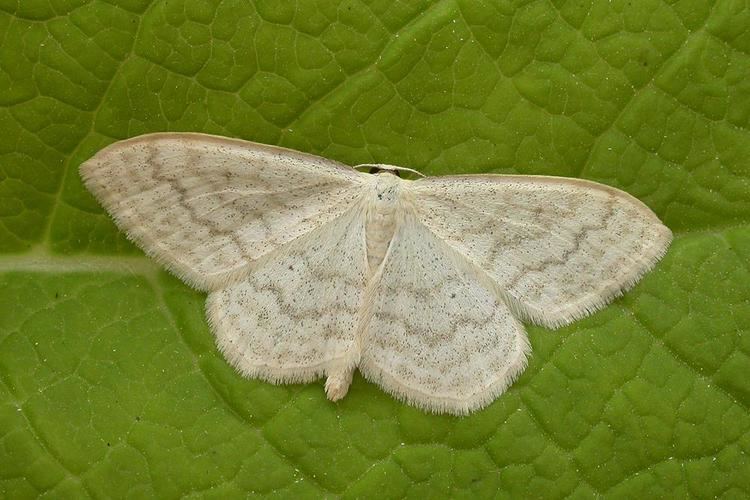Higher classification Scopula | Family Geometridae Scientific name Scopula floslactata Rank Species | |
 | ||
Similar Scopula, Scopula immutata, Riband wave, Small fan‑footed wave, Butterflies and moths | ||
The cream wave (Scopula floslactata) is a moth of the Geometridae family. It is found in forest and woodland regions, feeding on grasses and small plants such as dandelion.
Contents
Distribution
It is a very common species in western Europe (parts of France and Central Europe.The range In the North extends to Scandinavia and Finland. The species is largely missing in southern Europe. There are isolated occurrences in southern Bulgaria and the Pyrenees).It extends East across the Palearctic from the Urals to the Russian Far East (Sakhalin) to Korea, northeastern China and Japan.
Description
Scopula floslactata has a wingspan of about three centimeters.Colour and pattern are variable. The wings are creamy-white to yellowish-white. Across the fore and hind wings, there are usually three jagged crosslines. Occasionally,there is a wavy line in the marginal field. The discal flecks are small and are often missing on the forewings, or very much blurred. In contrast, the discal flecks on the hindwings are almost always present. The fringes are sometimes also slightly darker than the ground colour.The males have small, feathered antennae. Similar Species: Distinguished from Scopula immutata by its less rounded forewings and less developed or absent black discal spot.
Biology
It has one generation per year, with adults taking flight from late May through early July.
The larvae feed on Woodruff (Galium odoratum), dandelion (Taraxacum officinale), bilberry (Vaccinium myrtillus), Lonicera xylosteum, Alnus glutinosa, Galium verum, Rumex acetosa, and Vicia sepium. They also eat dry leaves of poplars (Populus) and willow (Salix).
